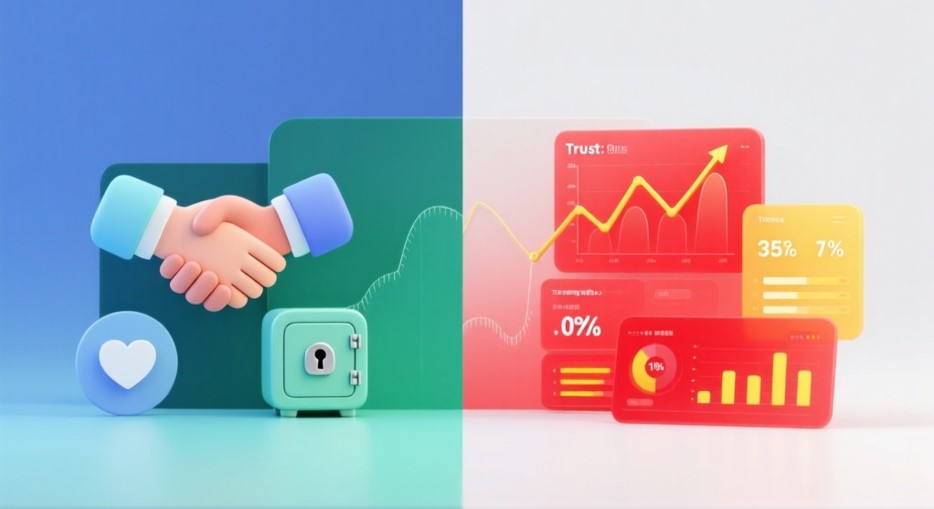Cybersecurity in 2025: how to safeguard your personal data online
As cyber dangers increase in 2025, protecting your personal information has never been more important. From AI-powered phishing scams to IoT vulnerabilities, attackers are targeting every digital touchpoint. This article delves into key tactics for staying secure, such as utilizing strong passwords, two-factor authentication, VPNs, and privacy tools, while emphasizing the significance of vigilance, software upgrades, and attentive online behavior in protecting your digital identity.
As we move into 2025, cyber threats are more sophisticated and prevalent than ever. The rapid evolution of technology has created new opportunities, and new vulnerabilities, for internet users globally. Whether browsing for work or leisure, protecting your privacy and personal information has become essential. Using privacy tools like an Incognito browser can help, but staying safe online requires a holistic approach. Let’s delve into what cybersecurity looks like in 2025 and how you can safeguard your personal data against emerging threats.
The changing landscape of cybersecurity threats
Cybersecurity risks in 2025 extend far beyond traditional malware and spam emails. New modes of attack, such as AI-powered phishing schemes and deepfake social engineering attacks, are making it harder to distinguish genuine communication from malicious intent. Mobile devices and smart home gadgets now represent key targets for hackers, as people increasingly use their smartphones and IoT devices to store and share sensitive information.
With more of our daily interactions and transactions happening online, the amount of valuable data we generate has skyrocketed. Attackers know this, and so they employ techniques like ransomware, network infiltration, and data scraping at an unprecedented scale. Even seemingly innocuous sources, such as third-party apps or unsecured Wi-Fi networks, can expose you to significant risks. As hackers innovate, cybersecurity solutions must evolve just as effectively to keep pace.
Key strategies to protect your personal data
Adopting strong cybersecurity practices is a necessity for anyone who wants to keep their information safe in 2025. Begin with the basics: use unique, complex passwords for every online account and enable two-factor authentication whenever possible. Strong authentication methods, especially biometrics or secure password managers, provide an additional layer of security that deters unauthorized access.
Regularly updating your software, browser, and security tools is equally important. Updates patch vulnerabilities that hackers could otherwise exploit. Avoid clicking on suspicious links, whether in emails, texts, or social media messages, and verify website authenticity before entering personal information. Using an incognito browser or privacy-focused extensions can also enhance your privacy, especially when handling sensitive data or using public computers.
Secure your home network by changing default router passwords and using encryption protocols such as WPA3. Consider setting up a separate guest network for visitors, which limits access to your main devices. Additionally, review app permissions and ensure apps only access the data and features they genuinely need to function.
"You can explore some of the Data Encryption Software from here to simplify the process."
Staying safe on social media and public networks
Social media platforms have become prime hunting grounds for cybercriminals seeking personal data. Oversharing personal details, location information, or your birthday could inadvertently expose you to identity theft or targeted scams. Adjust your privacy settings so only trusted contacts can view your posts and personal details. Regularly review who follows you and be cautious of unsolicited friend requests or messages.
When using public Wi-Fi, such as in cafes, airports, or hotels, exercise extra caution. These networks are notoriously insecure and easy for attackers to intercept data on. If you must access sensitive accounts or conduct financial transactions on public networks, always use a virtual private network (VPN) to encrypt your traffic. Wherever possible, avoid entering passwords or payment information on shared or public devices to prevent credential theft.
Be aware that your digital footprint is permanent. Think critically about the types of content you share online, and periodically delete old accounts or content you no longer wish to be associated with. The less personal data you have circulating online, the smaller your risk exposure becomes.
Emerging Tools and Best Practices for 2025
Cybersecurity solutions in 2025 now include advanced machine learning algorithms that detect and respond to threats in real-time. Many platforms proactively warn users of suspected phishing attempts or automatically flag unusual login activity. Take advantage of these built-in security features whenever they’re available. Keep track of the latest digital security trends by following authoritative sources, participating in webinars, or subscribing to technology newsletters.
Consider using decentralized password management tools and encrypted messaging apps, which store sensitive information locally rather than on cloud servers. These solutions help minimize the risks associated with large-scale data breaches. Setting up biometric authentication, such as fingerprint or facial recognition for your accounts and devices, adds yet another obstacle for would-be attackers. Ultimately, cybersecurity is a shared responsibility, awareness and vigilance remain your best defenses in the digital age.

Subscribe & get all related Blog notification.





Post your comment